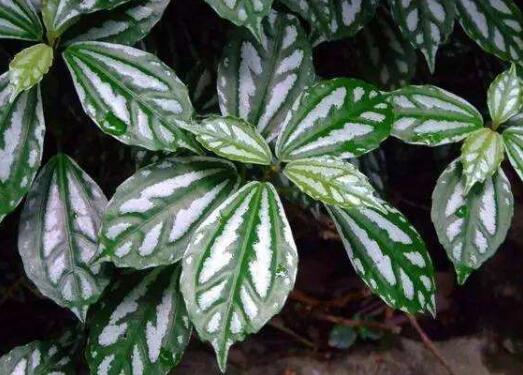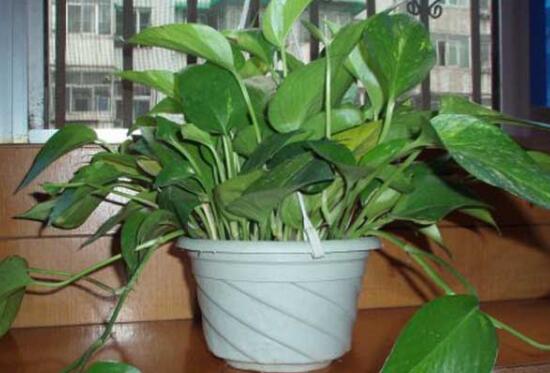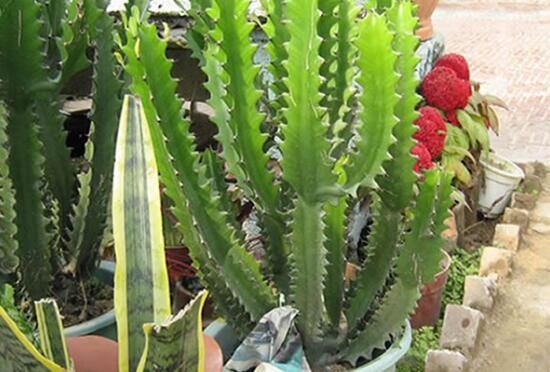How to propagate, the method of propagation / cuttage or ramet
Cold water is a wide range of plants, it can not only be used for ornamental, but also has a very high medicinal value, for many diseases have a good treatment effect, that is, because of its high role, so it has been a large number of reproduction. So how to reproduce the cold water? What are the breeding methods of cold spray? Next, the editor will take you to learn about it.
1. How to propagate, cuttage / ramet

When it comes to how to reproduce, in fact, it is mainly divided into two methods: cutting propagation and split propagation, of which cutting propagation is the main method, and there are more people who use this method of propagation, and the survival rate is also relatively high. as for the specific steps of reproduction, there is a detailed introduction below, let's take a look.
Second, the propagation method of cold spray.
Cuttage propagation
1. Cutting time is available in both spring and autumn
When we are preparing for cuttage propagation of cold water flowers, it is very important to choose a right period of time, generally speaking, it is best to choose in spring and autumn, because the climate of these two seasons is more suitable for its growth, and the success rate of cutting will be greatly improved. So we should keep this in mind.
two。 Soil selection, sandy soil
Before cutting propagation, we must first choose the soil, which is a step to lay a good foundation, so we must choose carefully. The cold water flower prefers the sandy soil with higher looseness, which has better drainage and air permeability, which can better absorb nutrients, so the survival rate will be higher.
3. Soil disinfection
After selecting the soil, we also need to disinfect it so that it will not be infected by diseases and insect pests. There are two methods of disinfection, one is to break it up and lay it in the hot sun for exposure disinfection, the other is to put it into the pot for stir-frying and disinfection, which can well eliminate diseases and insect pests.
4. Selection of cuttings, selection of robust branches
In the process of cutting cold water, the selection of cuttings is also a very important step. We had better choose branches that are relatively robust and disease-free, so that the survival rate will be very high. If we choose branches that look very small and delicate, then we can basically declare the cutting failure.
5. Cutting method, rooting in 10 days
The cutting method of cold water is still relatively simple, but it is best to find a chopstick to insert a hole in the soil before cutting, so that it is not easy to hurt the root system. After the cutting is done, we need to pour water through it. Then put it in a cool place, wait until about 10 days after taking root, you can carry out normal maintenance.
Ramet propagation
In addition to cutting propagation, cold water can also carry out ramet propagation, although not many people are used in this method, but the survival rate is not low at all. Ramet propagation can be carried out in combination with turning the basin and changing the soil. when turning the basin, we should take the plant out of the basin soil, and then divide it into several layers. at the same time, the old stem is truncated, and the 2-3 nodes of the stem can be preserved. Then plant in a pot, so that new shoots will sprout soon after survival.
Ramet and Cuttage Propagation of Illicifolia paniculata
Cold water flower is a popular small foliage plant nowadays. Because of its strong adaptability and low difficulty in reproduction, many friends are able to feed and are very popular. Generally, the method of cutting propagation is commonly used, and you can also choose separate plant propagation, because the difficulty of reproduction is relatively low, so the survival rate is relatively high. The editor will introduce to you some matters needing attention in the process of propagation.
Cold spray
First, cutting propagation: cutting can be carried out in spring and summer. It is not suitable for cutting in high temperature season in summer, but it grows slowly in winter. Select the growing and full branches, cut the stem tip 5cm long as cuttings, retain a few leaves at the end, and insert them directly into the sand bed with vermiculite or plain sand as the matrix, or cut into the basin soil mixed with peat and soil, the depth should not exceed 2 cm. Put it in a semi-shade place, keep the soil temperature at 18-20 ℃, spray water with a spray can when it is dry, take root in about 2-3 weeks, and transplant or basin after 1-2 months.
Second, split-plant propagation: the clump of cold water is very strong, so the whole column can be divided into several parts and put on the basin respectively combined with turning the basin and changing soil. At the same time, the old stem is truncated, and the basal 2-3 nodes of the stem are preserved. After survival, the axillary buds can germinate quickly and produce new lateral branches.
Water: like to be moist, keep the basin soil moist in summer, spray and spray the leaves every day to keep the leaves bright.
Fertilizer: from April to September, fertilize once a month.
Soil: like loose, well-drained soil, can be mixed with loam, river sand, rotten leaf soil.
Wen: like warmth, the suitable temperature for growth is 15 ℃ 25 min. Winter indoor overwintering, the temperature is about 5 ℃.
Light: more resistant to shade, avoid the scorching sun, like scattered light.
The Propagation method of Cold Water spray Cuttage Propagation
Cutting time:
Cutting can be carried out in both spring and summer. It is not suitable for cutting when the temperature is high in summer, and it can also be cut in winter, but the indoor temperature is lower and the growth is slower. Cuttings can usually be cut at a temperature between 18 and 20 ℃.
Cutting soil:
It is difficult for family cuttings to find their favorite soil, so it is recommended to buy soil that has been configured and sterilized. Or dig some coarse sand on the mountain and rinse with clean water several times before use. Do not use the soil dug up in the saline-alkali soil, it is not conducive to the rooting of flowers, but will affect the growth of flowers.
Cuttings:
Select the branches with strong growth of cold water spray, cut the stems and leaves at the front end by 5cm and 8cm, retain a few leaves at the front end, and insert them directly into the sand bed with vermiculite or plain sand as the matrix, or cut into the basin soil mixed with peat and soil, the depth should not exceed 2 cm. Put it in a semi-shade place, keep the soil temperature at 18-20 ℃, spray water with a spray can when it is dry, take root in about 2-3 weeks, and transplant or basin after 1-2 months.
Ramet propagation
Cold spray is very clustered, so the plant can be taken out of the basin and divided into several layers by turning the basin and changing soil. At the same time, the old stem is cut short, and the 2-3 nodes of the stem are retained and planted in the pot. New shoots will sprout soon after survival.
- Prev

How to propagate green orchid? the propagation method / cutting survival rate of green orchid is 100%.
The efficacy of green orchid is very strong, it is a kind of foliage plant, not only good-looking, but also can absorb formaldehyde and other poisonous gas, so that indoor air is fresh. Such a good plant is naturally in great demand, so it is propagated in large numbers, so how to reproduce the green orchid? Here are two propagation methods of green orchid.
- Next

How to propagate keel flower, the cutting method of keel flower / spring cutting and winter flowering
Dragon bone flower, a kind of plant that can produce dragon fruit, is highly effective, not only good-looking, but also edible and medicinal, so it is deeply loved by flower friends. In life, many flower friends raise a pot of keel flowers at home, but do you feel monotonous? If so, you might as well breed a few more pots, as for how to reproduce keel flowers.
Related
- Fuxing push coffee new agricultural production and marketing class: lack of small-scale processing plants
- Jujube rice field leisure farm deep ploughing Yilan for five years to create a space for organic food and play
- Nongyu Farm-A trial of organic papaya for brave women with advanced technology
- Four points for attention in the prevention and control of diseases and insect pests of edible fungi
- How to add nutrient solution to Edible Fungi
- Is there any good way to control edible fungus mites?
- Open Inoculation Technology of Edible Fungi
- Is there any clever way to use fertilizer for edible fungus in winter?
- What agents are used to kill the pathogens of edible fungi in the mushroom shed?
- Rapid drying of Edible Fungi

